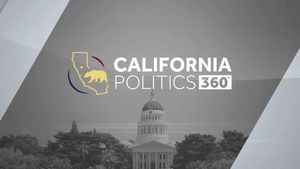On October 12, 2025, the lush highlands of Lam Dong province became the epicenter of Vietnam’s investment ambitions, as the People’s Committee hosted a major investment promotion conference. With the theme "Lam Dong breakthroughs potential, elevates position," the gathering drew a crowd of major domestic and international investors, along with high-ranking government officials and industry leaders. The stakes? Nothing short of a massive transformation for the region, with over 35,000 billion VND in new capital poised to reshape Lam Dong’s landscape.
According to Tuoi Tre, the conference showcased 72 projects up for investment, ranging from sweeping tourism destinations to high-tech agriculture and renewable energy. The scale of these plans is eye-catching: the Dan Kia - Suoi Vang tourism area alone will span nearly 4,000 hectares in Da Lat’s Lang Biang ward, while four separate industrial complexes for bauxite mining and alumina processing will cover a combined 3,000 hectares. Other headline projects include a 440-hectare high-tech agricultural zone, a 625-hectare rural residential area in Bung Thi - Ta Kou, a 346-hectare new commercial and service urban area in Tien Thanh, and the ambitious Phan Thiet airport urban area, set across 294 hectares in Mui Ne ward.
But it wasn’t just about grand blueprints. In a tangible show of progress, Lam Dong’s provincial government awarded nine investment policies and certificates to eight enterprises at the event, with a total expected investment capital exceeding 35,000 billion VND. These projects, which are expected to utilize about 2,300 hectares of land, span tourism, agriculture, real estate, and renewable energy sectors—areas seen as key to Lam Dong’s next chapter of growth. The government also inked 13 investment memorandums with enterprises, further broadening the base of future collaboration.
Among those receiving certificates and signing agreements were some of Vietnam’s most influential corporations: Sun Group, Vingroup, Thanh Thanh Cong Group (TTC Group), Novaland, and Hoa Sen Group. Their involvement signals not only the scale of the opportunity but also the confidence of the business community in Lam Dong’s potential. The provincial government, for its part, has urged investors to implement their projects swiftly and efficiently, promising to accompany them every step of the way and to promptly resolve any difficulties that may arise during execution.
Deputy Prime Minister Nguyen Hoa Binh, who attended the conference, acknowledged Lam Dong’s determined efforts to attract investment. He drew particular attention to the province’s announcement of 360 new projects for the 2026-2030 phase—a clear sign that Lam Dong is thinking big, and thinking ahead. As reported by Tuoi Tre, Nguyen Hoa Binh emphasized, "Attracting investments in transport infrastructure, clean energy, sustainable urban areas, high-tech agriculture, and high-quality tourism is the right direction to leverage local advantages." He also committed to ongoing improvements in policy, business environment, and strategic infrastructure, as well as the development of special mechanisms to help Lam Dong grow rapidly and sustainably.
This energetic push for investment comes at a time when Vietnam is re-examining the very rules that govern how capital moves—not just within its borders, but beyond. On the same day as Lam Dong’s high-profile conference, the Vietnam Chamber of Commerce and Industry (VCCI) released feedback on the draft Investment Law, focusing on Chapter V, Section 2, which deals with foreign investment projects. According to the VCCI’s analysis, the draft law requires any project with investment capital of 20 billion VND or more, or those in so-called conditional foreign investment sectors, to complete procedures to obtain certificates of foreign investment registration. Investors must also adjust these certificates if there are changes to the form of investment, capital, source of funds, project location, or main operational objectives.
On the surface, the draft law does simplify some procedures. For example, it removes the need for formal approval of foreign investment policies and limits certificate requirements to only those projects with capital of 20 billion VND or more, rather than every single foreign investment. But VCCI, as reported by Tuoi Tre, argues that the requirement to obtain certificates for projects above this threshold—or for those in conditional sectors—still creates significant procedural burdens. This is especially true when projects need to be adjusted midstream, a common occurrence in the fast-moving world of international business.
The VCCI also highlights inconsistencies between Vietnamese law and the foreign investment laws of other countries, particularly when it comes to conditional sectors such as banking, insurance, securities, media, and real estate. These sectors are already tightly regulated at home, but when Vietnamese investors move abroad, they must also comply with the laws of the host country. The VCCI questions whether requiring certificates for these sectors truly serves a clear management objective, noting, "It is not clear what impact investors in these sectors abroad would have on public interests at home, and whether these conditions can actually control such impacts."
To ease the administrative burden and encourage more dynamic investment, the VCCI has proposed that the government remove the requirement for certificates of foreign investment registration for most projects, except those with capital from 200 billion VND or more. They also suggest dropping the conditional sector requirement altogether. The aim is simple: make it easier for Vietnamese enterprises to invest overseas, reduce unnecessary paperwork, and allow businesses to respond more nimbly to opportunities and changes.
These proposed changes are more than just bureaucratic tweaks. They reflect a deeper shift in how Vietnam sees its place in the global economy. As Vietnamese companies grow in size and ambition, their ability to invest abroad—and to do so efficiently—will play a crucial role in shaping the country’s economic future. At the same time, Lam Dong’s bold investment drive shows how local governments are looking to attract capital, talent, and innovation to their own regions, leveraging Vietnam’s broader economic momentum.
Of course, balancing the need for robust oversight with the desire for a business-friendly environment is no easy task. The government must ensure that investments—both incoming and outgoing—are sound, sustainable, and aligned with national interests. But as the events of October 12 demonstrate, there is a growing consensus that reducing red tape and empowering investors is the way forward.
Lam Dong’s investment conference and the ongoing debate over the Investment Law together paint a picture of a country in transition—one that is eager to unlock its potential, embrace new partnerships, and compete on a bigger stage. Whether these efforts will yield the dramatic breakthroughs envisioned remains to be seen, but one thing is clear: Vietnam is determined to make its mark, both at home and abroad.



